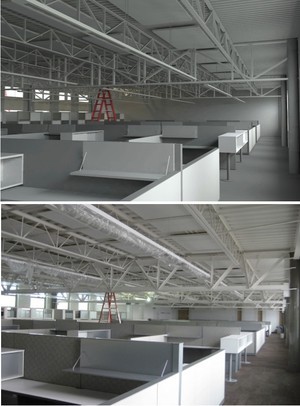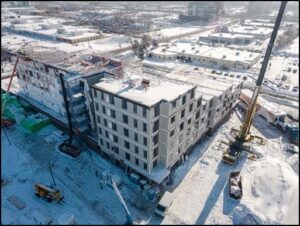The daylighting experts at the National Renewable Energy Laboratory (NREL), located in Golden, spend their days pondering the sun. Researchers Rob Guglielmetti and Jennifer Scheib are working to perfect tools that integrate daylight and electric lighting analysis with whole building energy modeling software.

What is building energy modeling (BEM)? BEM is used to predict a building’s energy use based on construction and regional climate. With BEM, the modeler is able to manipulate elements of a building’s construction, such as adding or removing shading elements, modifying HVAC systems, or changing glazing types. With each component modeled, the computer runs simulations to predict a building’s energy usage based on occupancy, cloud cover, temperature, season, and a host of other variables.
While simple daylighting software is available, most BEM tools are complex and challenging to learn, with more sophisticated daylight modeling software taking entire arrays of processors to accurately reflect the sun’s movement across the sky. The effort is often limited to high performance buildings and large budgets. The work that Scheib and Guglielmetti are performing in their positions at NREL is done with the long term vision of making BEM accessible to the average person.
The NREL researchers are committed to making annual simulations of daylight easier and more accurate. According to Guglielmetti, “It’s a very exciting time in industry. Our focus is to make this a usable tool that everyday people can access through the web. For instance, a retailer that has stores everywhere can run climate-based calculations and fine-tune designs to save energy based on regional climate and daylight availability.”
Advanced Energy Design Guides, published by ASHRAE, currently offer strategies to minimize energy use beyond what is required by the model energy code, ASHRAE 90.1. Another of the NREL team’s goals is to help refine the Energy Design Guides by offering much more accurate daylighting strategies based on their research and development of these new tools.
An additional benefit of a simpler BEM tool that incorporates daylight analysis is the ability to update model energy and building codes with accurate climate modeling data that incorporates daylight’s true impact on energy use regionally.
Most importantly, more accurate energy modeling, including daylighting, will help building teams meet energy codes in practice rather than in the abstract world of energy modeling and code compliance. Currently, actual building energy use often differs drastically from energy modeling predictions because of software limitations and difficulty of use. As Scheib states, “If you’re actually working to meet an energy metric, you need an accurate modeling tool.”









